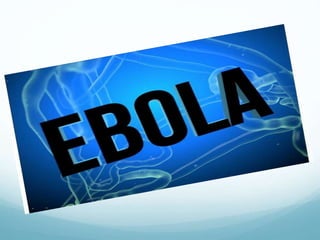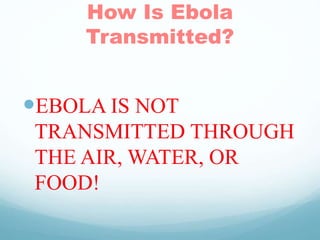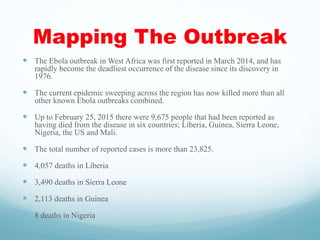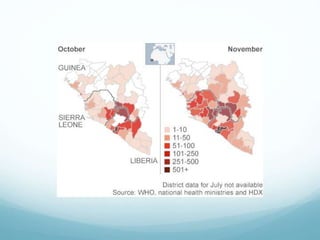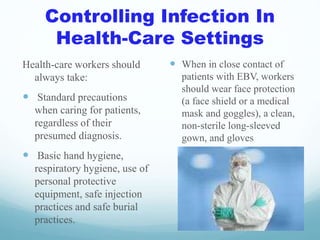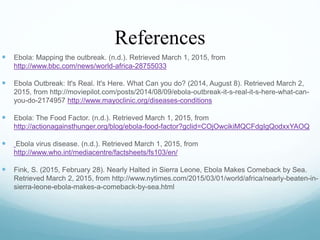Ebola virus disease is a severe and often fatal illness in humans that was first identified in 1976. The virus spreads through direct contact with body fluids from infected humans or animals. Early symptoms include fever, fatigue, and muscle pain that can progress to vomiting, diarrhea and internal bleeding. While there is no licensed treatment, supportive care such as rehydration can improve survival. The 2014-2015 outbreak in West Africa was the largest in history, resulting in over 23,000 cases and 9,600 deaths across multiple countries. Controlling the outbreak requires community engagement along with safe practices in healthcare settings and burials.
